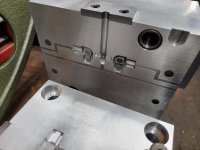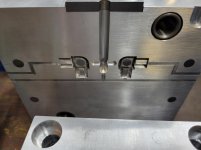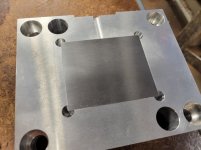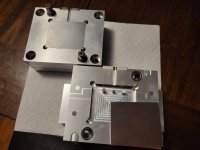Morning everyone!
I am trying to get ideas on what to do with an existing mold base I have that has cavities burned directly in the base. This is for my home shop so I am trying to save money as opposed to just buying a whole new mold base.
Is there anything wrong with milling out pockets in the face and making inserts out of D2 so I can just change cavities when I want to make a new injection molded part?
This is for an old vertical injection molder that is a part line injection setup.
I am trying to get ideas on what to do with an existing mold base I have that has cavities burned directly in the base. This is for my home shop so I am trying to save money as opposed to just buying a whole new mold base.
Is there anything wrong with milling out pockets in the face and making inserts out of D2 so I can just change cavities when I want to make a new injection molded part?
This is for an old vertical injection molder that is a part line injection setup.






